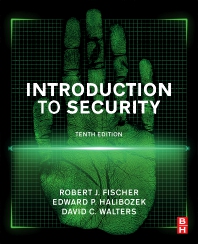IBM Security announced results from a study finding 70 percent of businesses infected with ransomware have paid ransom to regain access to business data and systems. In comparison, more than 50 percent of consumers surveyed said they would not pay to regain access back to personal data or devices aside from financial data.
Ransomware is an extortion technique used by cybercriminals where data on computers and other devices is encrypted and held for ransom until a specified amount of money is paid. The IBM X-Force study, “Ransomware: How Consumers and Businesses Value Their Data” surveyed 600 business leaders and more than 1,000 consumers in the U.S. to determine the value placed on different types of data. Some key findings from consumers include:
- While more than half of consumers surveyed initially indicated they would not pay the ransom, when asked about specific data types, 54 percent indicated they would likely pay to get financial data back.
- Also, more than half (55%) of parents surveyed would be willing to pay for access to digital family photos vs. 39 percent of respondents without children.
Businesses Paying Up
Demonstrating ransomware’s success with businesses, nearly one in two business executives surveyed have experienced ransomware attacks in the workplace. The study found 70 percent of these executives said their company has paid to resolve the attack, with half of those paying over $10,000 and 20 percent paying over $40,000.
As part of the survey, nearly 60 percent of all business executives indicated they would be willing to pay ransom to recover data. The data types they were willing to pay for included financial records, customer records, intellectual property and business plans. Overall, 25 percent of business executives said, depending upon the data type, they would be willing to pay between $20,000 and $50,000 to get access back to data.
Small businesses remain a ripe target for ransomware. Only 29 percent of small businesses surveyed have experience with ransomware attacks compared to 57 percent of medium size businesses. While cybercriminals may not view these businesses as offering a big payday, a lack of training on workplace IT security best practices can make them vulnerable. The study found that only 30 percent of small businesses surveyed offer security training to their employees, compared to 58 percent of larger companies.
Consumers Can be Motivated to Pay
One out of two consumers participating in the survey indicated they would be unwilling to pay a hacker to regain access to their data. When presented with specific data types their willingness to pay began to increase.
For example, 54 percent of participants would be willing to pay for financial data and 43 percent were willing to pay for access back to their mobile device. When asked to put a value on different types of data, 37 percent of consumers said they would pay over $100 to get data back. For comparison, IBM X-Force typically sees ransomware demanding approximately $500 or higher, depending upon the victim and the time lapse they wait before paying.
Cybercriminals are having their best success leveraging ransomware against parents. In fact, 39 percent of parents surveyed have experience dealing with ransomware while overall 29 percent of non-parents indicated some experience.
IBM’s analysis determined that parents are more motivated to pay due to sentimental value and children’s happiness. For example, 71 percent of parents surveyed were most concerned about their family digital photos and videos being threatened with only 54 percent of non-parents showing the same concern. Overall, 55 percent of parents would pay for access back to the photos while only 39 percent of non-parents would pay.
Access to gaming devices, likely used by children, were also highly ranked by parents as most concerning to them. In fact, it was second to photos and video with 40 percent of parents reported being worried about losing access to these devices versus 27 percent of non-parents.









